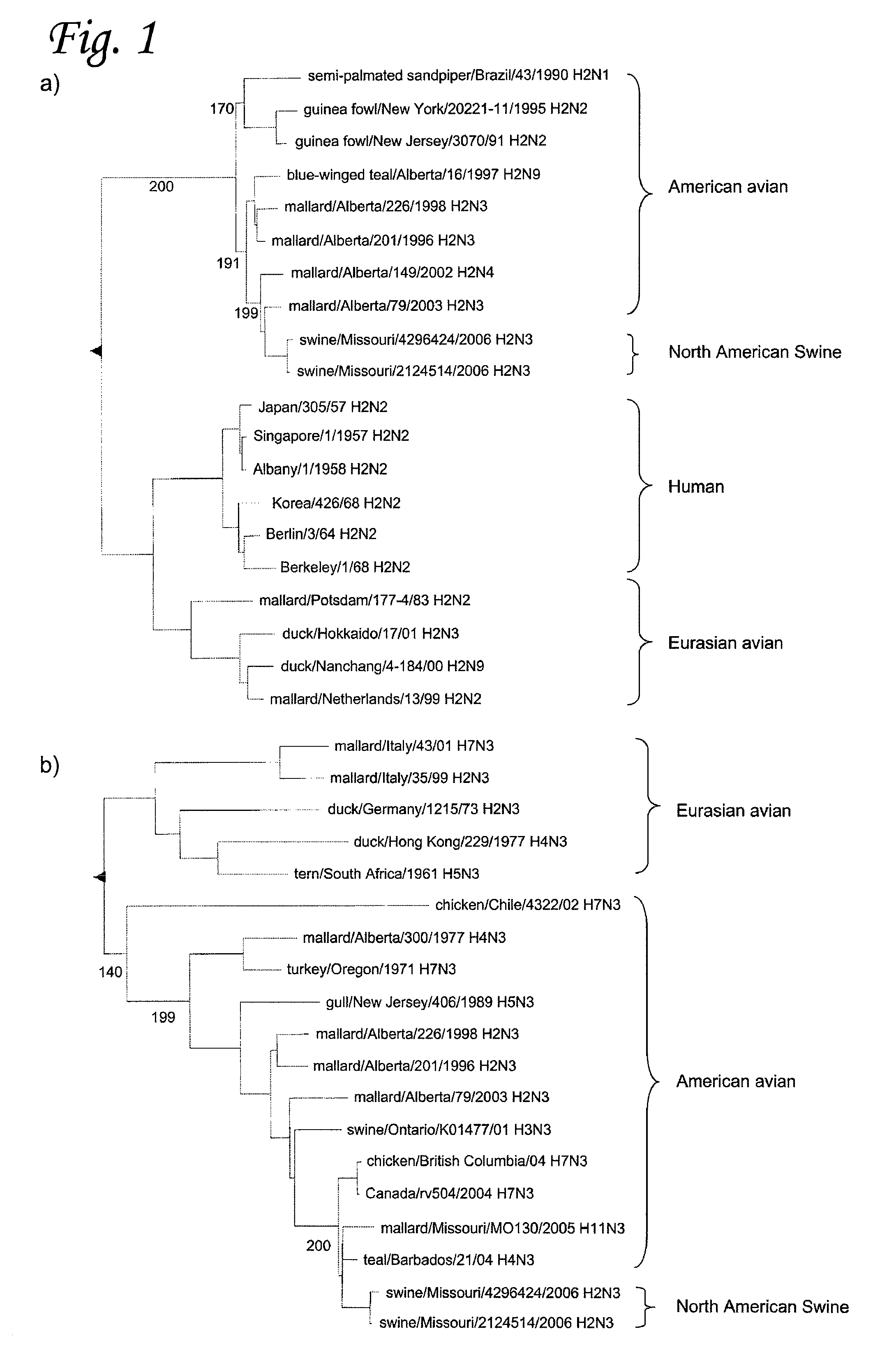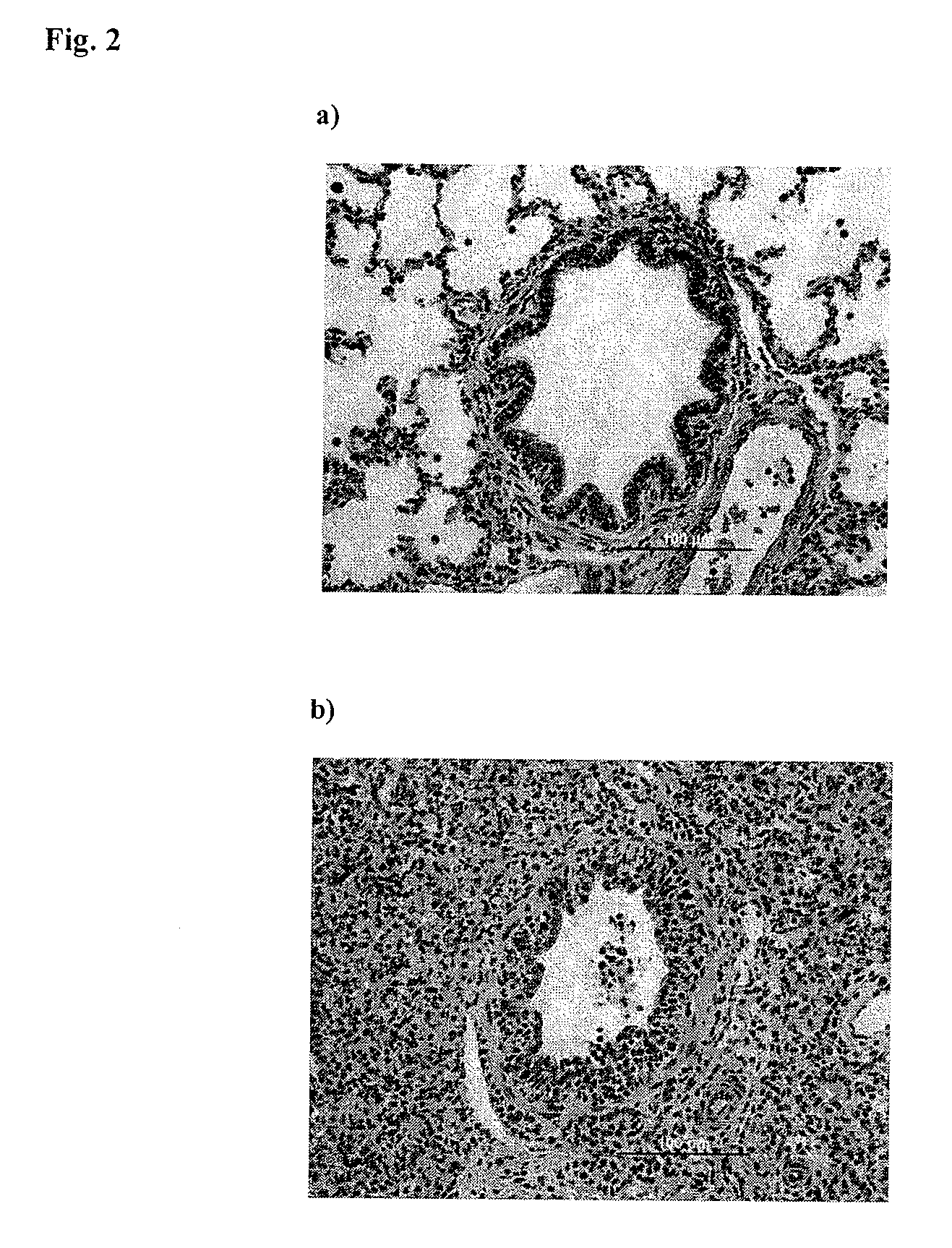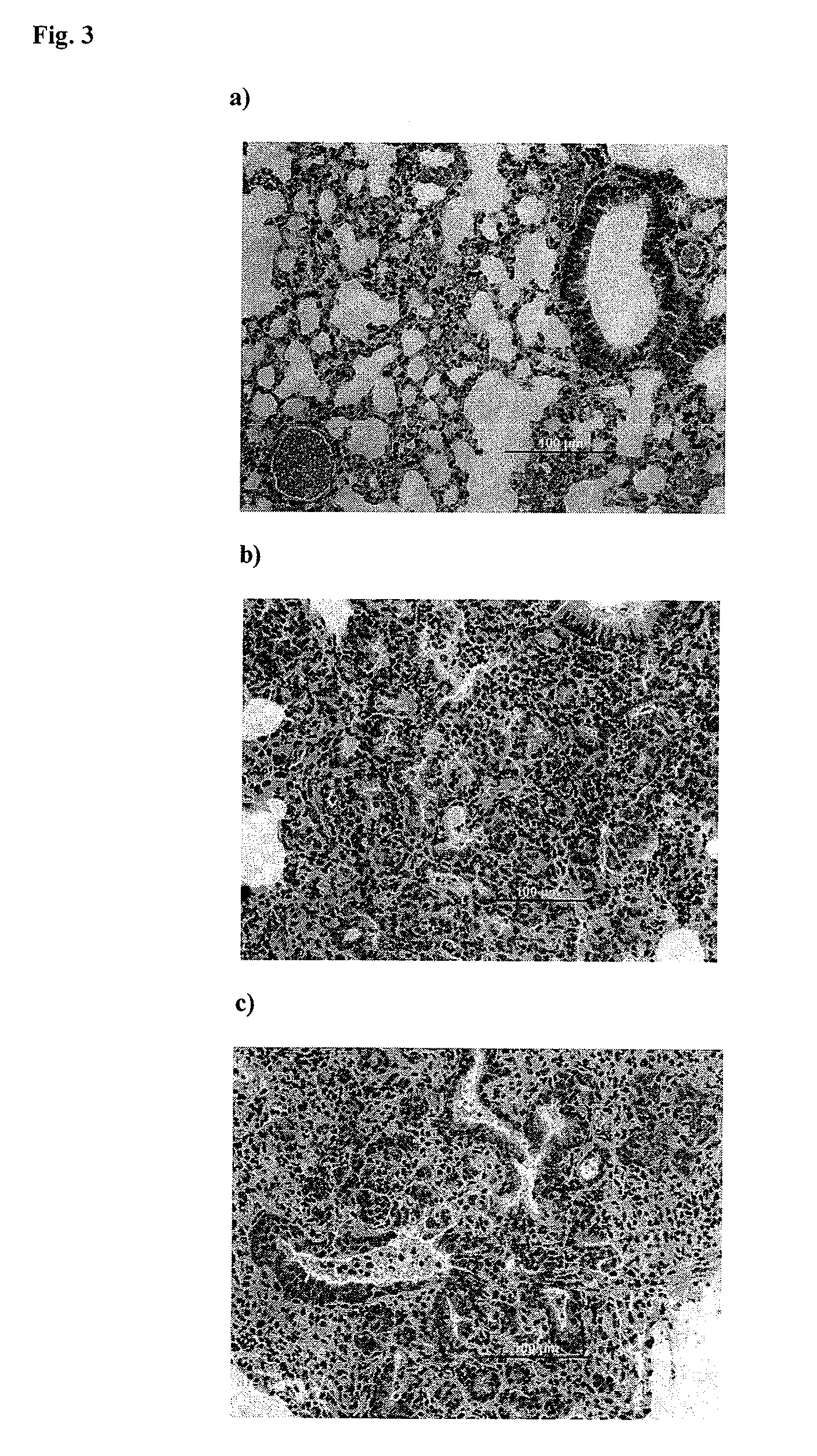H2N3 influenza A viruses and methods of use
a technology of h2n3 and influenza a, applied in the field of h2n3 influenza a viruses and methods of use, can solve the problems of virus acquisition of contagious property, influenza pandemics within new host species, and infection of other species that appears to be limited to certain
- Summary
- Abstract
- Description
- Claims
- Application Information
AI Technical Summary
Benefits of technology
Problems solved by technology
Method used
Image
Examples
example 1
[0136]This example describes the isolation and characterization of H2N3 influenza A viruses from pigs with respiratory disease from two farms in the United States, a subtype not previously reported in swine. These H2N3 reassortant viruses contain genes derived from avian and swine influenza viruses. The pathogenicity and transmissibility of the H2N3 isolates in different mammalian hosts was also investigated. The H2N3 virus was able to replicate in pigs, mice, and ferrets and was transmitted among pigs and ferrets. Serologic evidence suggests that the virus continued to circulate in the affected swine production systems.
Materials and Methods
[0137]Analysis of Clinical Samples. An outbreak of respiratory disease occurred in pigs at a commercial grower-finisher swine farm. At necropsy, the attending veterinarian observed gross lesions of pneumonia and submitted formalin-fixed and unfixed sections of lung tissue to the Minnesota Veterinary Diagnostic Laboratory (MVDL). At the MVDL, the ...
example 2
Vaccine Development
[0175]To prepare the vaccine, H2N3 influenza virus was grown in MDCK cells and diluted to approximately 128 HA units. The virus was then UV-inactivated and a commercial adjuvant was added at a 1:5 ratio (Emulsigen, MVP Laboratories, Inc., Ralston, Nebr.). The inactivated vaccine was given intramuscularly to five pigs at a dose of 128 HA units in one ml per pig at 5 and 7 weeks of age. Another group of five pigs received one live exposure to the H2N3 virus at 4 weeks of age with 2 ml of 1×106 TCID50 / ml given intratracheally while anesthetized. A challenge control group of five pigs received no vaccine. At approximately 10 weeks of age, pigs in all groups were challenged with 2 ml of 1×106 TCID50 / ml of the H2N3 virus given via the intratracheal route while anesthetized. The percentage of pneumonia in the H2N3 vaccinated groups was significantly reduced when compared to the non-vaccinated H2N3 challenged group. Pigs in the H2N3 live exposure and the inactivated vacci...
PUM
| Property | Measurement | Unit |
|---|---|---|
| volume | aaaaa | aaaaa |
| stable | aaaaa | aaaaa |
| length | aaaaa | aaaaa |
Abstract
Description
Claims
Application Information
 Login to View More
Login to View More - R&D
- Intellectual Property
- Life Sciences
- Materials
- Tech Scout
- Unparalleled Data Quality
- Higher Quality Content
- 60% Fewer Hallucinations
Browse by: Latest US Patents, China's latest patents, Technical Efficacy Thesaurus, Application Domain, Technology Topic, Popular Technical Reports.
© 2025 PatSnap. All rights reserved.Legal|Privacy policy|Modern Slavery Act Transparency Statement|Sitemap|About US| Contact US: help@patsnap.com



